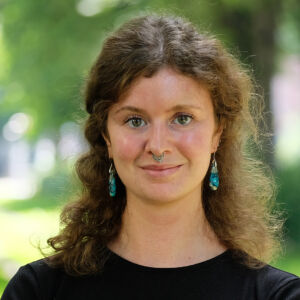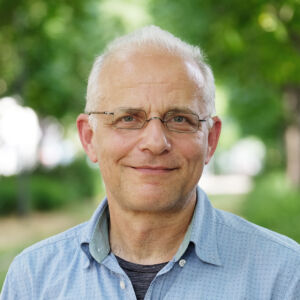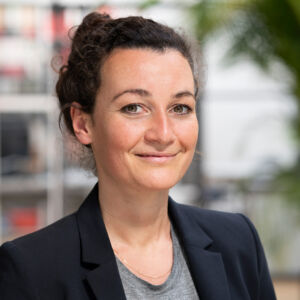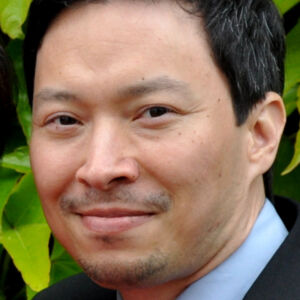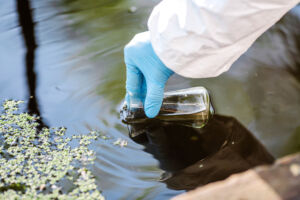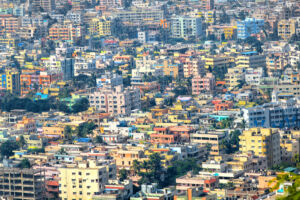

Coupled Infrastructures
In the Research Unit “Coupled Infrastructures, we develop sustainable systems for a circular society with a focus on resource efficiency, reuse and equitable use. We explore how infrastructures promote circularity and shaping scenarios for social and ecological transformations.
Our research focuses on two research strands:
Social-ecological innovation and transformation management
The transformation of infrastructure systems requires changes in technology, knowledge, cooperation and management. We explore how social-ecological transformation management can open up sustainable development paths for infrastructures. Here, we focus on two essential aspects: How can existing path dependencies be overcome and how can social-ecological innovations be applied on a broader scale? Using transdisciplinary methods, we also investigate how social-ecological transformation management can be improved and what role piloting innovations can play in this context.
Coupling infrastructure systems for circular societies
Complex, synchronized transformation processes are necessary to couple different infrastructure systems. In our research we investigate how these co-transformations of coupled infrastructure systems can succeed and we address the question of what barriers must be overcome and how cooperation between actors from different infrastructures can be fostered? To enable just and effective contributions to a circular society, we explore synergies, solutions for the emergence of conflicting goals and societal embedding. We develop transformation pathways and objectives across sectoral boundaries and investigate how user practices are related to the decisions of infrastructure operators.
Contact

Team
-
Dr. Fanny Frick-Trzebitzky
![]()
Dr. Fanny Frick-Trzebitzky
Head of the Practices and Infrastructures Hub, Head of the Junior Research Group regulate
Go to Profile -
Dr. Johanna Kramm
![]()
Dr. Johanna Kramm
Head of the Knowledge Processes and Transformations Hub
Go to Profile -
Dr. Immanuel Stieß
![]()
Dr. Immanuel Stieß
Member of the Executive Board, Head of the Practices and Infrastructures Hub
Go to Profile
Projects
-
WaReNam – Water reuse strategy for Namibia ![]() Water
WaterWaReNam – Water reuse strategy for Namibia
Go to ProjectUm Rahmenbedingungen für die Umsetzung von Wasserwiederverwendung zu schaffen, integriert das Projekt WaReNam innovative Technologien, Wissenstransfers, adaptive Governance und Kapazitätsentwicklung auf verschiedenen Ebenen.
-
Ecoplas – Development of an on-site measuring system for determining E.coli contamination in water ![biologist working on water analysis. Ecology and environmental pollution concept.]() Water Chemical Risks
Water Chemical RisksEcoplas – Development of an on-site measuring system for determining E.coli contamination in water
Go to ProjectClosing the time gap in monitoring E.coli bacteria in wastewater treatment, among other areas, through near real-time feedback at the disinfection plant.
-
ChemKom – Strategic science communication on the risks of perpetuity chemicals ![]() Chemical Risks
Chemical RisksChemKom – Strategic science communication on the risks of perpetuity chemicals
Go to ProjectChemKom investigates how scientific organizations, industry associations, authorities and NGOs strategically communicate scientific content, with a focus on per- and polyfluorinated chemicals (PFAS).
-
P-Net – Regional network for resource-efficient phosphorus recycling and management ![Traktor von oben auf dem Feld, Luftaufnahme]() Water
WaterP-Net – Regional network for resource-efficient phosphorus recycling and management
Go to ProjectThe project is investigating ways of establishing regional networks to process precipitated phosphorus into phosphorus fertilizers in so-called struvite plants.
-
LiveSewer – AI-based wastewater monitoring ![]() Water
WaterLiveSewer – AI-based wastewater monitoring
Go to ProjectIn the research project LiveSewer, real-time wastewater data are processed and analyzed using AI-supported pattern recognition (machine learning).
-
SCIP Plastics – Strengthening Waste Prevention in Khulna and Reducing Marine Plastic Pollution ![]() Chemical Risks Transformation
Chemical Risks TransformationSCIP Plastics – Strengthening Waste Prevention in Khulna and Reducing Marine Plastic Pollution
Go to ProjectThe SCIP Plastics research project is developing a master plan for the city of Khulna (Bangladesh) that aims to transform the municipal waste management system in a sustainable way.
-
HypoWave+ – Implementation of a hydroponic system for sustainable water reuse in agriculture ![]() Water Land Use
Water Land UseHypoWave+ – Implementation of a hydroponic system for sustainable water reuse in agriculture
Go to ProjectHypowave+ is supporting the implementation of the piloted HypoWave concept. It focuses on integrated quality management, which stands for a holistic view of water treatment processes and regional vegetable production.
-
AquaticPollutantsTransNet – Knowledge transfer for the reduction of pollutants and pathogens in the water cycle ![]() Water Chemical Risks
Water Chemical RisksAquaticPollutantsTransNet – Knowledge transfer for the reduction of pollutants and pathogens in the water cycle
Go to ProjectThe project supports the transfer of knowledge from 18 EU-funded projects on water pollutants and pathogens to the public and administrative sector, politics, industry and business.
-
GreeN-H2 Namibia – Feasibility study on green hydrogen in Namibia ![]() Transformation Water
Transformation WaterGreeN-H2 Namibia – Feasibility study on green hydrogen in Namibia
Go to ProjectThe GreeN-H2 Namibia project is investigating the feasibility of producing, converting and transporting green hydrogen in Namibia.
-
Rainwater transfer in Fellbach: from the commercial zone to farmland ![]() Water Climate Adaptation
Water Climate AdaptationRainwater transfer in Fellbach: from the commercial zone to farmland
Go to ProjectThe feasibility study examines the framework conditions for rainwater transfer from the Fellbach industrial estate to agricultural irrigation.
-
RobustNature – Robustness of Nature-Society Systems in the Anthropocene ![]() Chemical Risks Biodiversity
Chemical Risks BiodiversityRobustNature – Robustness of Nature-Society Systems in the Anthropocene
Go to ProjectRobustNature identifies characteristics that determine the robustness of ecosystems and guarantee their functionality through dynamic compensation in the event of disturbances.
-
TRAPA India – Transition pathways for solving urban wastewater problems in Indian cities ![]() Chemical Risks Water
Chemical Risks WaterTRAPA India – Transition pathways for solving urban wastewater problems in Indian cities
Go to ProjectThe aim of the BMBF project is to develop and evaluate resource-efficient wastewater concepts. ISOE is responsible for a fundamental institutional and stakeholder analysis, the sustainability assessment from a socio-ecological perspective and a final transfer potential analysis.
-
IntenKS – Improving sewage sludge treatment in China for energetic and material utilisation ![]() Water
WaterIntenKS – Improving sewage sludge treatment in China for energetic and material utilisation
Go to ProjectThe aim of the IntenKS research project is to develop an ecologically and economically sustainable concept for the optimized material and energy recovery of sewage sludge.
-
netWORKS 4 – Resilient networks: Contributions of urban supply systems to climate justice (follow-up project) Water Climate AdaptationnetWORKS 4 – Resilient networks: Contributions of urban supply systems to climate justice (follow-up project)
Go to ProjectThe netWORKS 4 project is investigating the networking of water infrastructures in urban areas. The aim is to initiate dialog processes on their sustainable design.
-
Assessment of the potential for the use of service water in Frankfurt am Main WaterAssessment of the potential for the use of service water in Frankfurt am Main
Go to ProjectThe aim of the project is to determine the potential demand for process water in Frankfurt am Main and at the same time to identify ways in which this demand can be met.
-
INTERESS-I – Integrated strategies to strengthen urban blue-green infrastructures Water TransformationINTERESS-I – Integrated strategies to strengthen urban blue-green infrastructures
Go to ProjectThe INTERESS-I research project is dedicated to the development of innovative and sustainable strategies for the water management of urban green spaces.
-
PlastX – Microplastics in bodies of running water Water Chemical RisksPlastX – Microplastics in bodies of running water
Go to ProjectIn the sub-project of the PlastX junior research group, a concept is being developed to assess the environmental risks posed by microplastics in flowing waters.
-
PLASTRAT – Reduction of plastic discharges in lakes and running waters Chemical Risks WaterPLASTRAT – Reduction of plastic discharges in lakes and running waters
Go to ProjectThe PLASTRAT project is developing solutions to reduce plastic in water bodies in urban areas and investigating consumer perceptions of environmentally friendly plastic.
-
BioFAVOR II – Low-tech recycling of faeces from decentralised sources SufficiencyBioFAVOR II – Low-tech recycling of faeces from decentralised sources
Go to ProjectThe research network in the BioFAVOR II project demonstrates the technical feasibility of a novel low-tech process for converting faeces from composting toilets into products that are hygienically and ecologically safe.
-
HypoWave – New Pathways Towards Wastewater Re-Use in Agriculture WaterHypoWave – New Pathways Towards Wastewater Re-Use in Agriculture
Go to ProjectHypoWave promotes a more sustainable use of water as a resource. Nutrients bound in wastewater are to be reused.
-
MULTI-ReUse – Modular treatment system for water reuse WaterMULTI-ReUse – Modular treatment system for water reuse
Go to ProjectThe project develops and evaluates a modular system for the treatment of municipal wastewater, with a focus on industrial applications in Germany.
-
netWORKS 4 – Resilient networks: how urban supply systems contribute to climate justice Water Climate AdaptationnetWORKS 4 – Resilient networks: how urban supply systems contribute to climate justice
Go to ProjectThe netWORKS 4 project is investigating the networking of water infrastructures in urban areas. The aim is to initiate dialog processes on their sustainable design.
-
Environmental Risks and Pharmaceuticals: The Key Role of Pharmacies Chemical RisksEnvironmental Risks and Pharmaceuticals: The Key Role of Pharmacies
Go to ProjectIn order to raise environmental awareness, the project team is working together with pharmacy practice partners to develop materials that will be used and evaluated on a pilot basis in training and further education.
-
Semizentral – Infrastructure systems for cities of the future experiencing rapid growth WaterSemizentral – Infrastructure systems for cities of the future experiencing rapid growth
Within the CLIENT joint project “Semizentral: Resource-efficient and flexible supply and waste disposal infrastructure systems for rapidly growing cities of the future – Phase 2” ISOE is supporting the implementation of a project that is testing the semicentral freshwater supply and wastewater treatment in a new district of Qingdao/China.Go to Project -
netWORKS 3 – Sustainable concepts for the municipal water sector Water Climate AdaptationnetWORKS 3 – Sustainable concepts for the municipal water sector
The goal of the research collaboration netWORKS is to develop innovative and sustainable solutions for the municipal water and wastewater sector. The netWORKS 3 project is designed to help municipalities adapt to the changing determining conditions in the water and wastewater sector.Go to Project -
NaCoSi – Sustainability controlling of the domestic water management Water Chemical RisksNaCoSi – Sustainability controlling of the domestic water management
The goal of the joint project is to develop a sustainability controlling for the domestic water management, thus minimising the risks that compromise sustainable development and improving the viability of the water sector.Go to Project -
Tracking down micropollutants Chemical RisksTracking down micropollutants
The project is studying how drug residue in the water cycle might be minimised with the help of technical and communications measures.Go to Project -
Drugs for man and the environment? Chemical RisksDrugs for man and the environment?
Go to ProjectThe aim of the project is to raise doctors' awareness of the environmental relevance of pharmaceutical residues in water by integrating the topic into their basic and further training.
-
SAUBER+ Innovative concepts for wastewater from public health sector facilities Chemical Risks WaterSAUBER+ Innovative concepts for wastewater from public health sector facilities
Go to ProjectIn the project, the risks of discharges of medicinal chemicals from retirement homes, nursing homes and hospices are assessed with stakeholder groups and action strategies are developed.
-
Conflicts of objectives between the application of medications and environmental protection Chemical RisksConflicts of objectives between the application of medications and environmental protection
Go to ProjectThe project investigates conflicts of interest between health and environmental protection caused by pharmaceutical residues in the environment.
-
TransRisk – Pollutants as a risk to the water cycle Chemical Risks WaterTransRisk – Pollutants as a risk to the water cycle
Scientists in the TransRisk project are studying how to characterise, communicate and minimise the risks that ensue due to new pollutants and pathogens in the water cycle.Go to Project -
KREIS – Innovative municipal wastewater system in ‘Jenfelder Au’ WaterKREIS – Innovative municipal wastewater system in ‘Jenfelder Au’
The innovative drainage and energy-generating concept HAMBURG WATER Cycle is being implemented in a new urban district of the city. ISOE is analysing the scheme in terms of user behaviour and sustainability.Go to Project -
Pharmas – Ecological and human health risk assessment of antibiotics and anticancer drugs found in the environment Chemical RisksPharmas – Ecological and human health risk assessment of antibiotics and anticancer drugs found in the environment
Pharmas analyses ecological and human health risks of pharmaceuticals in the environment. Thirteen institutions from six countries exemplarily examine anticancer drugs and antibiotics.Go to Project -
Eliminating micropollutants in sewage plants Chemical Risks WaterEliminating micropollutants in sewage plants
This project looks into how active drugs substances and micropollutants can be extracted via sewage plants. The part played by ISOE is to investigate how such inputs can be avoid.Go to Project -
Structural concept for Trinkwasserversorgung Magdeburg WaterStructural concept for Trinkwasserversorgung Magdeburg
In this project a structural concept for the future water supply was developed on behalf of the water utility Trinkwasserversorgung Magdeburg GmbH (TWM).Go to Project -
start2 – Management Strategies for Hormonally Active Agrochemicals Water Chemical Risksstart2 – Management Strategies for Hormonally Active Agrochemicals
The team of the start2 project set out to develop systemic action strategies to strengthen risk prevention in the context of water pollution control.Go to Project -
Communication Strategies for the Handling of Pharmaceuticals Chemical RisksCommunication Strategies for the Handling of Pharmaceuticals
ISOE developed a communication strategy for the Federal Environmental Agency (UBA). It was intended to reduce the input of pharmaceuticals into water bodies.Go to Project -
netWORKS 2 – Transformation Management for a Sustainable Water Infrastructure Water Climate AdaptationnetWORKS 2 – Transformation Management for a Sustainable Water Infrastructure
The netWORKS group project developed work aids and decision-making tools to assist municipalities in planning and investing in water resource management.Go to Project -
Competence Atlas Water – Water Technologies and Water Management in Hesse WaterCompetence Atlas Water – Water Technologies and Water Management in Hesse
The competency map for water engineering and water resource management in Hesse was developed to present profiles of Hessian companies and facilities operating in the field of water.Go to Project -
Water 2050 – Sustainable Innovations for Water Management WaterWater 2050 – Sustainable Innovations for Water Management
In the Wasser 2050 project, the team examined sustainable system solutions for water resource management.Go to Project -
start – Management Strategies for Pharmaceuticals in Drinking Water Chemical Risks Waterstart – Management Strategies for Pharmaceuticals in Drinking Water
The project start was dedicated to developing precautionary action strategies to reduce the input of active pharmaceutical ingredients into water bodies.Go to Project -
Sustainability Performance in the Water Supply WaterSustainability Performance in the Water Supply
In order to render the sustainability performance of German water utilities measurable and evaluable, the team identified operational figures which it compiled into a catalogue.Go to Project -
netWORKS – Transformations in Network Related Infrastructure Sectors Water Climate AdaptationnetWORKS – Transformations in Network Related Infrastructure Sectors
The goal of the project group was to develop strategies and instruments that enable municipal decision-makers to take forward-looking action in the current process of transformation to the infrastructure systems.Go to Project -
Privatisation in the Water Sector WaterPrivatisation in the Water Sector
ISOE compiled this exploratory study for the "Social Ecological Research" funding programme of the German Federal Ministry of Education and Research. The scientists ascertained research needs for sustainable development in water resource management.Go to Project -
Privatisation and Competition in Drinking Water Supply in Germany WaterPrivatisation and Competition in Drinking Water Supply in Germany
ISOE accompanied the Consumer Center of North Rhine-Westphalia in drafting its position in the debate on liberalisation and privatisation of the water market.Go to Project -
Substitution of Environmental Relevant Flame Retardants Chemical RisksSubstitution of Environmental Relevant Flame Retardants
The team investigated the use of flame retardants in Germany on the basis of selected products. These included products from the categories of insulating material and polyurethane foam, construction materials for rail vehicles, printed circuit boards, basic materials for electronics housing, and mattress/upholstery fabrics.Go to Project -
Water Cycle an Urban-Ecological Development WaterWater Cycle an Urban-Ecological Development
The project team investigated the connection between the social, technical and ecological aspects of a future approach to urban water usage. It focused its research on the water cycle in the cities of Dresden and Frankfurt am Main. The scientists came up with sustainable strategies to form a scenario capable of tackling the water-related problems and socio-ecological hot spots in urban industrial regions.Go to Project -
Stormwater Infiltration in Wiesbaden WaterStormwater Infiltration in Wiesbaden
ISOE subjected parts of Wiesbaden city to an initial water management appraisal. Here, scientists categorised which surfaces were suitable for decentralised infiltration of precipitation. The surfaces were evaluated with a view to groundwater protection (pollutant input and filtering qualities of the soils) and their infiltration capability.Go to Project -
Material flows of environmentally relevant chemical substances: product line controlling WaterMaterial flows of environmentally relevant chemical substances: product line controlling
Using fire protection as an example, the project team investigated the possibility of implementing an ecological scheme to manage material flows along the value chain. In preventative fire protection, plastics are often treated with flame retardants containing problematic substances.Go to Project
Based on a product tree analysis, the potentials and restrictions of ecological innovations in the field of fire protection were examined. Personal computers and car seats were the product lines of reference here. At ISOE, actor-oriented studies were carried out to establish people's knowledge about substances, risk awareness, usage patterns and innovation routines.


